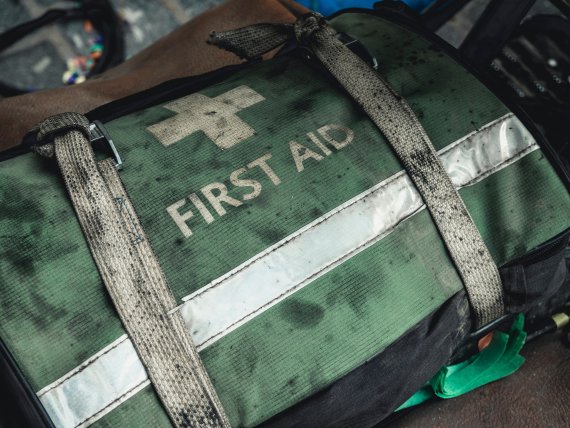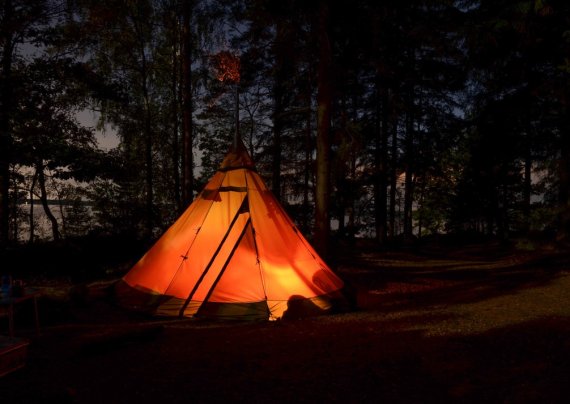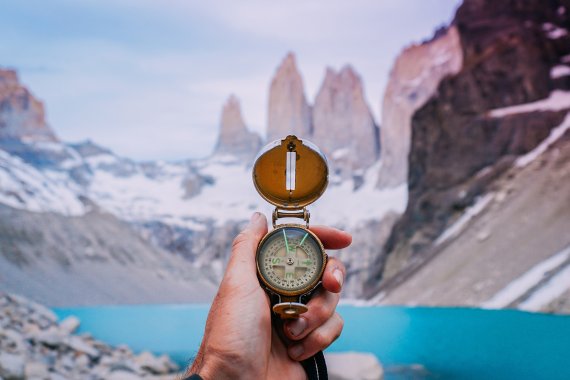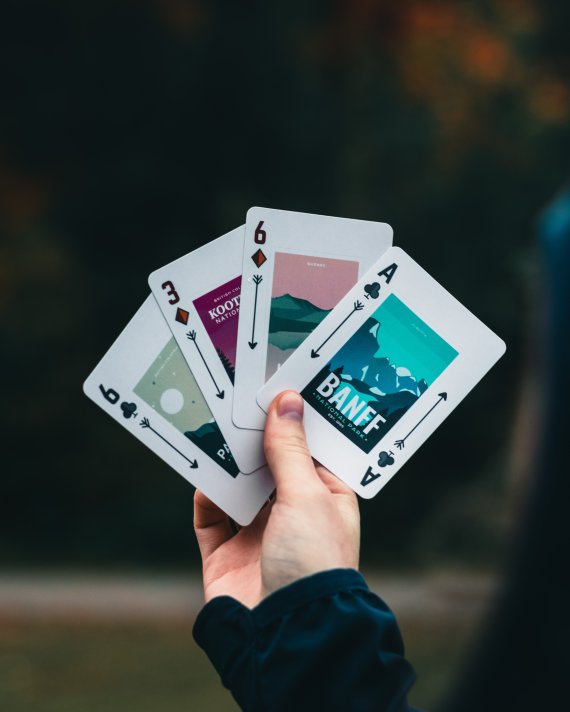Longer tours want to be well planned. Those who quickly gather everything together shortly before departure and stuff it into their trekking backpack often forget something. Then the rain jacket is there, but the rain pants are still in the closet and already the hiker has to struggle with soaking wet legs to the next hut.
On hut tours, little things like earplugs are indispensable, the forgotten chocolate is less dramatic, but just as annoying. With the following lists, you can ensure that you also have the flask with your favorite schnapps for the well-deserved drink in the evening.
- The right clothing for trekking
- Hygiene items
- Personal documents
- Emergency pharmacy for trekking
- Provisions
- Suitable sleeping clothes
- Possibly luggage for a glacier tour
- Possible luggage for tent tours
- Possibly card games
- Lighter, headlamp, maps, bivy sack
For a hut tour you should take your valid alpine club pass with you. If you don't have one yet, you can apply for one online. Members benefit from price reductions on hut tours - even abroad.
Is the journey organized, for example, are the train tickets for the trip to the destination booked? Also check the validity of your identity card or passport. If you need a new ID card, it will take several weeks to get it. A headlamp is part of the basic equipment. Are the batteries charged and is the camera ready for use?
Check your emergency first-aid kit for hiking to make sure it's complete. Inform yourself online, with magazines or in the travel agency about special features in the respective region. What temperatures do you have to expect, how often does it rain, how cold can it get at different altitudes?
The center of gravity of the trekking backpack should be close to the body and at shoulder height. In this way, the center of gravity of the backpack is above the body's center of gravity and does not pull its wearer backwards. Proceed as follows when packing:
Pack the hut sleeping bag and other light items in the bottom compartment. Medium-weight items, such as clothing, belong at the top outside. Pack everything that is heavy as far up as possible, at shoulder height and close to your back.
On flat trails and hiking trails, the center of gravity can be higher; in difficult terrain, it is better to lower it a bit and thus closer to the body's center of gravity. This will make you walk a little more bent forward to compensate, but you will control your balance better.
All small items, such as snacks and sunscreen, you simply stow in the lid compartment and reach them there quickly. The emergency pharmacy should be packed in a separate bag and belongs far up. This way, even a third person can find it in an emergency without having to rummage around for a long time.
To keep the trekking backpack as compact as possible, you should attach as few items of equipment as possible to the outside of the backpack. Make sure the weight is evenly distributed and keep things tidy with pack bags. Choose waterproof backpack models, so you save the rain cover.

- Underwear, shirt and socks
- Neckerchief
- Light fleece jacket
- Waterproof rain jacket
- Waterproof rain pants
- Cap
- Gloves
- Mountain/touring pants
- Swimming shorts
- Trekking shoes
- Slippers for the hut

- Toothbrush and toothpaste
- Soap
- Sunscreen
- Lip balm
- Soap and hair shampoo
- Towel
- Toilet paper
- Hand wash in a tube for longer trips

- Identity card
- Possibly passport
- Alpine club membership card
- Check card

- Personal medication
- A quick bandage
- Painkillers
- A rescue blanket
- Rescuetrops
- Blister plaster

- Water bottle
- Personal favorite food
- Salt & pepper
- Cereal bar
- Chocolate and energy food if necessary
- Schnapps (or non-alcoholic alternative) for drinking around the campfire

- Pants and long sleeve shirt
- Earplugs
- Hut sleeping bag
- Warm socks

- Rope
- Climbing harness
- Crampons
- Prong protection
- Ice screws
- Ice axe
- Piton
- Abseil Eight
- Clamping wedges
- Mountain rope
- Rope
- Expresses
- Gaiters
- Rope ring
- Carabiner
- Helmet

- Sunglasses or glacier glasses
- Compass
- Lighter
- A signal whistle
- Headlamp with spare batteries
- Pocket knife
- Map material
- Smartphone and charger
- Bivy sack
- Camera
- Binoculars

- Card games
- Reference books best on e-reader
- Puzzle games
- Trekking diary
- Binoculars
- Headphones
- Audio books
- ...

- Lighter (for a campfire)
- A signal whistle
- Headlamp with spare batteries
- Pocket knife
- Map material
- Smartphone and charger
- Bivy sack
- Camera
So that the hut tour does not become a torture for your back during the trekking tour, the backpack must be properly selected and packed. First things first: leave everything superfluous at home! A trained hiker can carry 20 to 25 percent of his body weight for a long period of time.
For a man weighing 80 kilograms, that's 20 kilograms. For comparison, the German Armed Forces assume 33 percent as the maximum weight, but the tours with such a fully loaded backpack and equipment are also known to be extremely strenuous.
Anything over 25 percent quickly becomes an ordeal for most hikers and also damages backs and joints. Inexperienced hikers in particular tend to carry far too much luggage on their first tour.

 OutDoor by ISPOOutDoor in transition
OutDoor by ISPOOutDoor in transition
- Awards
- Mountain sports
- Bike
- Fitness
- Health
- ISPO Munich
- Running
- Brands
- Sustainability
- Olympia
- OutDoor
- Promotion
- Sports Business
- Textrends
- Triathlon
- Water sports
- Winter sports
- eSports
- SportsTech
- OutDoor by ISPO
- Heroes
- Transformation
- Sport Fashion
- Urban Culture
- Challenges of a CEO
- Trade fairs
- Sports
- Find the Balance
- Product reviews
- Newsletter Exclusive Area
- Magazine






